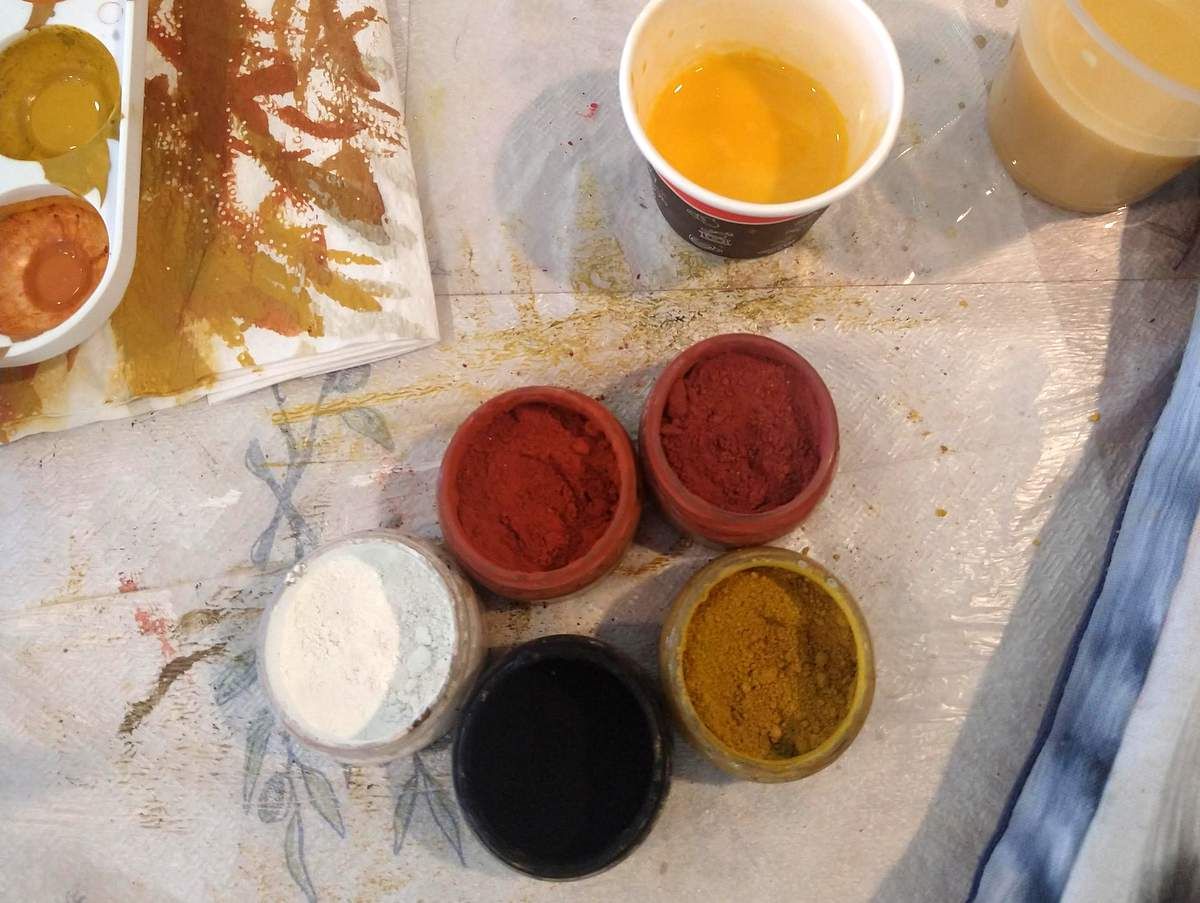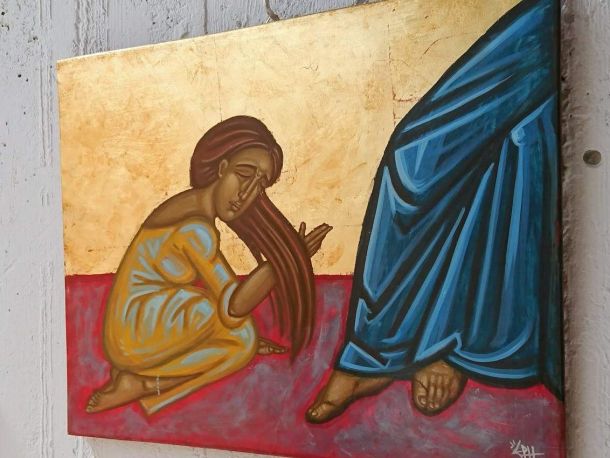
Color recipes in byzantine iconography

Another “How to” on byzantine icons and this time on Color recipes in byzantine iconography. So, What about the mineral pigments? Despite the variety of colors available on the market, there are only a few-or even four for the ancient Greeks- mineral powders that can be necessary for the creation of a byzantine icon.
So depending the school, or the master, the colors used (with some variations from time to time) are basically the following (in random order):
1.Titaneum white/ Blanc de titane 2. Black/ Noir d’ ivoire 3. Yellow ocher/ Ocre jaune 4. Cinnabar Red/ Vermillion claire 5. Rouge Anglais (a sort of brownish red) 6. Cadmium Red (a sort of Carmin) 7. Cadmium Yellow 8 Turquise Blue (or Blue Cobalt) 9. Green 10 Ombre vert/ Green Umbre
For example, -if numbers are easier for you to remember- a ccombination of 2,3 and 5 (while other schools use 3,5,1 and 10 or 9) produces what we call “proplasmos of the face” or simply the brown flesh, the color of the earthly soil out of which Adam was made.





